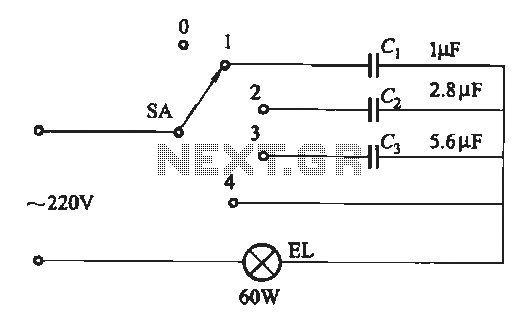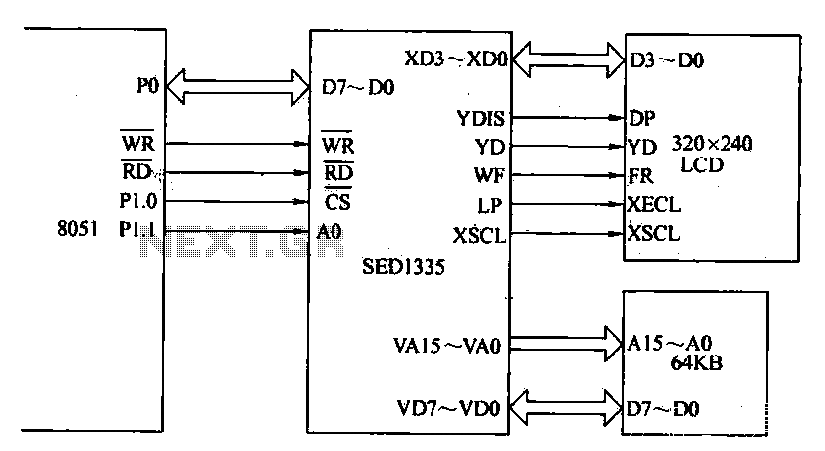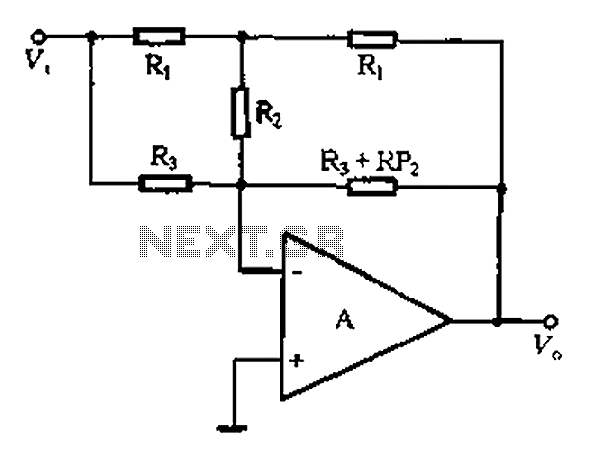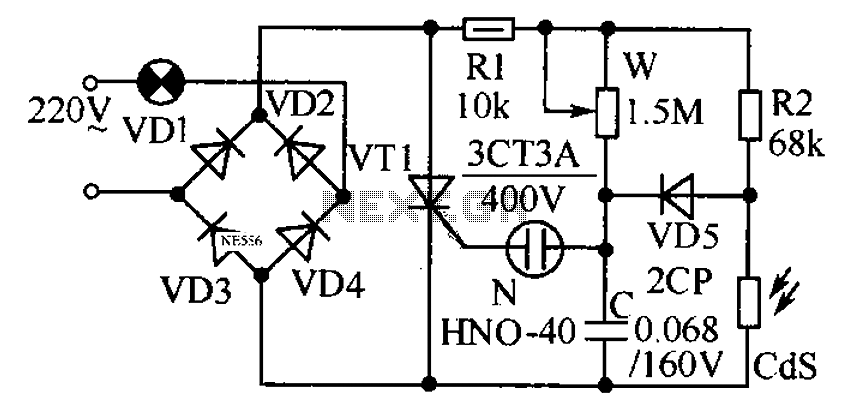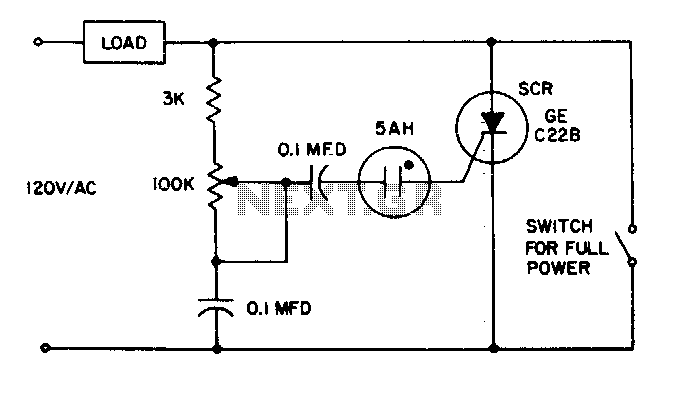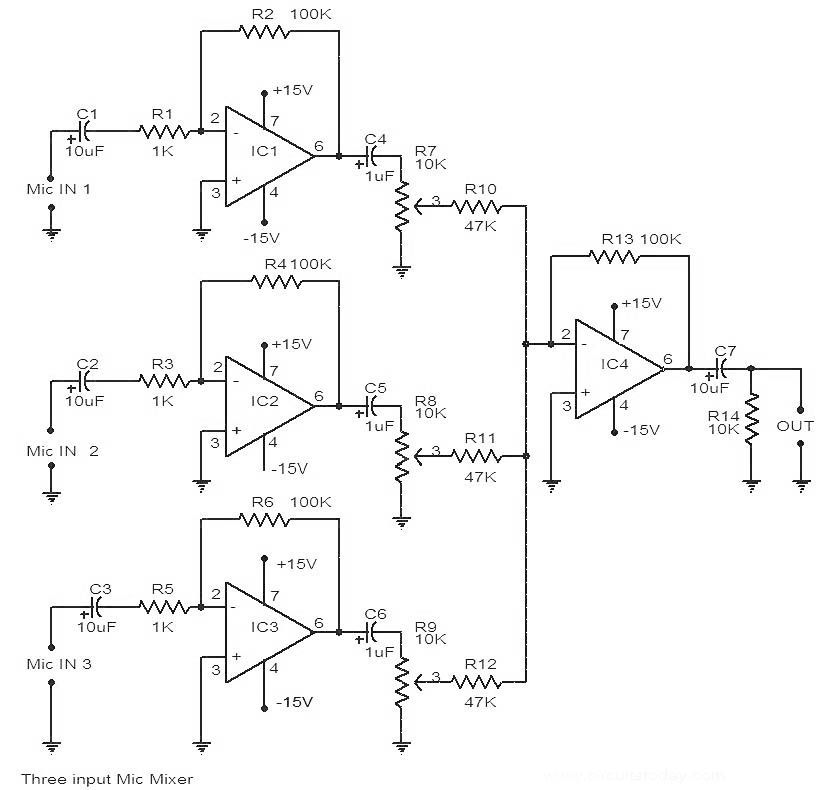
FET audio mixer circuit
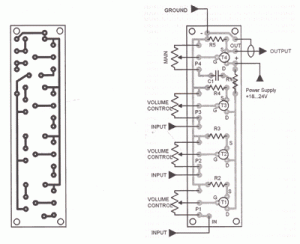
This FET audio mixer demonstrates the versatility of FETs. Originally designed for high-frequency applications, FETs can also effectively handle audio frequencies, showcasing exceptional performance in this domain. The circuit can accommodate an unlimited number of inputs, provided that the resistance value of R1 is selected according to the formula: R1 = 22K / n, where n represents the number of inputs.
The FET audio mixer circuit utilizes Field Effect Transistors (FETs) to achieve high fidelity audio mixing. The use of FETs in this application is advantageous due to their high input impedance and low output impedance, which minimizes signal loss and distortion. The mixer can be configured to accept multiple audio signals, such as those from microphones or musical instruments, and combine them into a single output signal.
In this circuit, the input signals are fed into the gate terminals of the FETs. Each FET acts as a variable resistor, controlled by the voltage at the gate, allowing for precise mixing of the audio signals. The formula for R1 ensures that the input impedance remains suitable for the desired number of inputs, preventing loading effects that could degrade audio quality.
The output of the mixer can be connected to a power amplifier or directly to a recording device, depending on the application. Additionally, the design can incorporate features such as volume controls for each input channel, allowing for further customization of the audio mix.
To enhance performance, bypass capacitors may be added to filter out any unwanted noise and to stabilize the power supply. The layout of the circuit should be carefully considered to minimize interference and maintain signal integrity, particularly in environments with high electromagnetic interference.
Overall, this FET audio mixer exemplifies the effective use of FET technology in audio applications, offering flexibility and high performance for a variety of mixing needs.This FET audio mixer is an example of FET`s versatility. FETs are originally designed for high frequency applications but they can be used for audio frequencies and in fact they perform excellently in this area. The number of inputs that can be connected to the circuit is unlimited as long as the R1 value is chosen according to this formula: R1 =
22K / n, where n = the number of inputs. 🔗 External reference
The FET audio mixer circuit utilizes Field Effect Transistors (FETs) to achieve high fidelity audio mixing. The use of FETs in this application is advantageous due to their high input impedance and low output impedance, which minimizes signal loss and distortion. The mixer can be configured to accept multiple audio signals, such as those from microphones or musical instruments, and combine them into a single output signal.
In this circuit, the input signals are fed into the gate terminals of the FETs. Each FET acts as a variable resistor, controlled by the voltage at the gate, allowing for precise mixing of the audio signals. The formula for R1 ensures that the input impedance remains suitable for the desired number of inputs, preventing loading effects that could degrade audio quality.
The output of the mixer can be connected to a power amplifier or directly to a recording device, depending on the application. Additionally, the design can incorporate features such as volume controls for each input channel, allowing for further customization of the audio mix.
To enhance performance, bypass capacitors may be added to filter out any unwanted noise and to stabilize the power supply. The layout of the circuit should be carefully considered to minimize interference and maintain signal integrity, particularly in environments with high electromagnetic interference.
Overall, this FET audio mixer exemplifies the effective use of FET technology in audio applications, offering flexibility and high performance for a variety of mixing needs.This FET audio mixer is an example of FET`s versatility. FETs are originally designed for high frequency applications but they can be used for audio frequencies and in fact they perform excellently in this area. The number of inputs that can be connected to the circuit is unlimited as long as the R1 value is chosen according to this formula: R1 =
22K / n, where n = the number of inputs. 🔗 External reference
